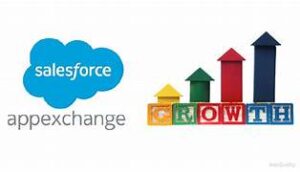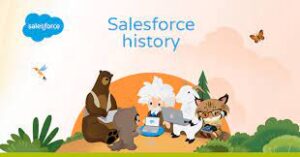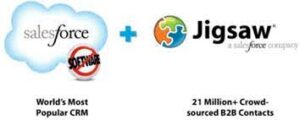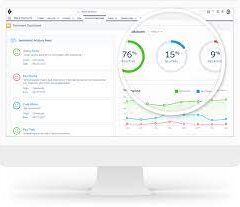What is Salesforce Integration?
Salesforce Integration is the process of connecting two or more systems to streamline workflows and enhance data consistency across platforms.
Consider situations where vital information is stored in one system but also needed in another. By integrating these systems, you ensure seamless data flow, improve efficiency, and enable smooth business processes.
Why is Integration Important?
In today’s digital landscape, businesses must continuously enhance efficiency and customer experience to stay competitive. Operating in isolation is no longer an option. Effective system integration ensures faster, scalable, and more reliable operations.
What is an API?
An API (Application Programming Interface) enables different applications to communicate with each other.
For instance, when you use a mobile app, it connects to the internet, retrieves data from a server, and displays it in a readable format. The right API ensures this process runs smoothly and efficiently.
Different types of APIs will be discussed later in the Salesforce Integration Capabilities section.
Types of Salesforce Integration Architectures
Each integration architecture has advantages and drawbacks. Here are the three main types:
1. Point-to-Point Integration
This is a one-to-one integration model where each system has a direct connection to another. For example, a sales application sends order details separately to a billing system, a shipping application, and a tracking system. However, this approach is costly to maintain and lacks scalability, as adding new integrations requires extensive modifications.
2. Hub-and-Spoke Integration
With this model, a central hub facilitates communication between systems. Instead of creating multiple direct integrations, each system only connects to the hub. This setup simplifies management and scalability compared to point-to-point integration.
3. Enterprise Service Bus (ESB) Integration
An evolution of the hub-and-spoke model, ESB uses an integration engine to connect various applications. ESB provides:
- Routing: Directing messages between systems.
- Orchestration: Managing the sequence of data exchange.
- Transformation: Converting data formats to ensure compatibility.
- Security: Enforcing authentication and authorization protocols.
Each system connects through an adapter, making it easy to scale integrations as business needs evolve.
Salesforce Integration Capabilities
Understanding APIs and integration capabilities is crucial. Here are key Salesforce integration tools:
1. REST API
Best for web or mobile applications, REST API operates using:
- GET: Retrieve data
- POST: Create records
- PUT: Update records
- DELETE: Remove records
It uses JSON or XML and functions synchronously, meaning it waits for a response before proceeding.
2. SOAP API
SOAP API is suited for back-end system integrations requiring structured payloads. It uses XML and supports asynchronous communication, meaning it can process requests without waiting for immediate responses.
3. Bulk API
Designed for handling large data volumes, Bulk API efficiently processes up to 100 million records within a 24-hour period. It is asynchronous, making it ideal for initial data migrations and batch processing.
4. Streaming API
Built on the publish/subscribe model, Streaming API supports near real-time data updates. It includes:
- PushTopic Events
- Platform Events
- Change Data Capture
This API is essential for event-driven architectures.
5. Outbound Messages
This declarative option sends messages to external systems when triggered by workflow rules or approval processes. It is asynchronous but requires acknowledgment from the receiving system.
6. Web Service Callouts
Salesforce can initiate outbound requests to external systems for data validation or process execution. These callouts require Apex coding and can be synchronous or asynchronous.
7. Salesforce Connect
Salesforce Connect enables real-time data access from external systems without storing the data in Salesforce. This “data virtualization” reduces storage costs and ensures up-to-date information is available when needed.
8. Heroku Connect
Heroku Connect synchronizes data between Salesforce and Postgres databases, making it ideal for high-volume applications where not all data needs to reside in Salesforce.
Salesforce Integration Patterns
Integration patterns define how systems interact. Consider:
1. Remote Call-In
External systems retrieve, update, or delete Salesforce data (e.g., an order management system updating Salesforce records).
2. Request and Reply
Salesforce calls an external system and waits for a response before proceeding (e.g., address validation services).
3. Fire and Forget
Salesforce sends a request but does not wait for a response (e.g., outbound messages and platform events).
4. Batch Data Synchronization
Data is periodically synchronized between Salesforce and external systems in bulk (e.g., nightly updates to a data warehouse).
5. UI Update Based on Data Changes
Salesforce UI updates dynamically when backend data changes (e.g., real-time case status updates for support agents).
6. Data Virtualization
Salesforce displays external data in real time without storing it, reducing storage costs and improving efficiency (e.g., Salesforce Connect).
Conclusion
Salesforce integration streamlines business processes, enhances efficiency, and improves data consistency. Understanding integration architectures, capabilities, and patterns helps businesses select the right approach for their needs. By leveraging Salesforce’s integration tools, organizations can achieve seamless connectivity across their technology ecosystem.













